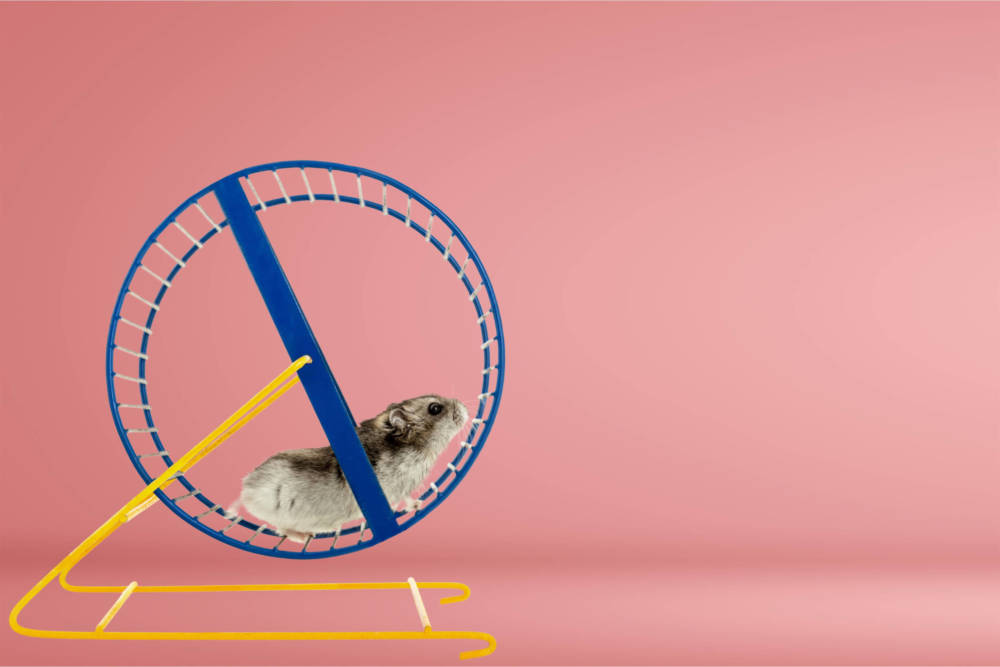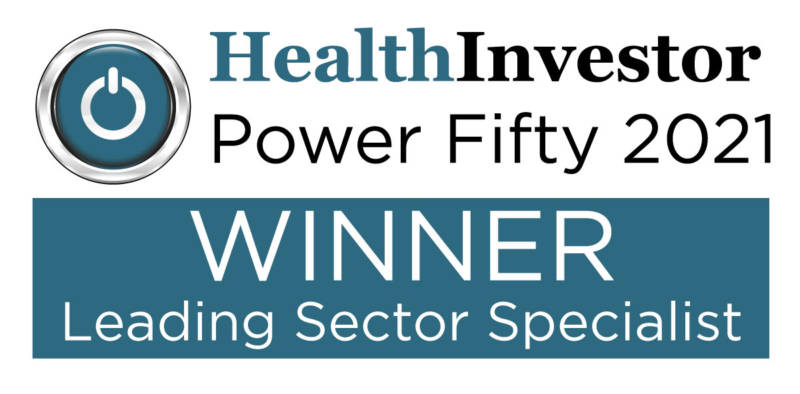Author: Amanda Nurse
This article originally appeared on LinkedIn on 15 September 2020
Ripping up the rule book and doing things differently is why I get out of bed in the morning. It was the key motivation to set up Carterwood with my business partner Ben Hartley 12 years ago.
Our goal was to build a team of smart people, cut out bureaucracy, make the most of technology, and deliver great market analysis to operators, developers, and investors in social care.
A spirit of innovation has always been central to achieving this goal and, by and large, I think we’ve done pretty well. We’ve got an amazing team, advise the majority of leading providers in the social care sector and live our values ’Do it right‘ and ’Do it fast‘. We’ve launched a Software as a Service (SaaS) platform for market analysis that achieves a world-class NPS score, and we are immensely proud of our work to date.
Despite this, I recently had some feedback from my team that showed me the importance of keeping innovation front and centre in business, because it’s so easy to let it slip out of focus. That’s where we found ourselves a couple of months ago.
35% of our team didn’t feel they could innovate
For all business owners, the last six months have been tough. We’ve been faced with challenges we could never have imagined at the start of the year.
Innovation is essential if we are going to find our way through this difficult economic environment. We need to adjust to the new normal, so Ben has led a team that has devoted the last six months to thinking about how we can adapt our services and software to meet changing market needs.
That work has led to some fantastic enhancements to our services and products. However, I believe that every single person in our business can improve the way we do things – whether it’s the office junior or the managing director – provided an opportunity to innovate exists. A couple of months ago, I wanted to check whether our team felt that this opportunity was available to them.
We looked to engagement platform Officevibe (which we use regularly) to answer the question and we were taken aback by the results. Our survey revealed that 35% of the team did not feel that they were encouraged to innovate.
The score was disappointing. What was I missing in my approach as MD? I was surprised and, given the premium we place on innovation and creativity, gutted that such a big proportion of our team didn’t see innovation as part of their role.
I spoke to several members of the team to understand more. It became clear that we have some big issues to address. Luke Sefton, one of our associates, was happy to share his take on it:
We talk about innovation a lot, but it’s often difficult to get the time and space to think creatively and consider different ways of doing things. There’s always a looming deadline.
It seems obvious in hindsight, but it became clear that many of the team felt that the pressures of the day job were restricting their ability to innovate. To be honest, I’d totally agree. The last six months have been some of the most pressured of my working life.
At this point you might be thinking: ‘Fair enough though, we’re in a global recession. Day-to-day priorities come first. Blue-sky thinking is a luxury, not a necessity.’
I can’t accept that.
Ben and I firmly believe that the day we stop innovating is the day we lose what makes us different, regardless of the environment around us. It’s something we simply must make time for; otherwise we will fail.
Making time for innovation
I asked the team for their thoughts on how we could create some space to focus on innovation or development. Luke noted that it’s common for businesses in the technology or creative sectors to carve out a dedicated block of time for the team to put the day job to one side and pursue projects that interest them at a personal, as well as professional, level.
We’re not a pure tech company, but we have always taken inspiration from the sector and adopted some of the more progressive working practices they’ve pioneered (such as flexible and remote working, which have been common at Carterwood since day one). So we thought we’d try it out.
The brief: Half a day. Phones off. Emails off. No distractions. Spend the time on something that could help your personal development, improve your wellness, or innovate some area of how Carterwood does business
We called it our Innovation and development hub. It took place on the afternoon of Wednesday 12 August, the day before our monthly team meeting, so that we would have an opportunity to share our thoughts and feedback while the experience was still fresh in our minds.
Here’s what we found:
- The team pursued an incredibly diverse range of interests. Here are just a few examples:
- Andy, a senior analyst, took the time to test out spatial coding functions that he had been itching to get to grips with for months.
- Natalie, our accounts assistant, worked on developing her presentation skills.
- Dan, our head of marketing, dedicated the afternoon to prototyping a longer-term marketing initiative.
- Philippa, our copy-editor, explored the topic of wellness by researching desk-based exercises.
- Everyone enjoyed the experience
- 85% of the team rated the Innovation and development hub as 8/10 or higher when surveyed to find out how useful and enjoyable it had been. No one rated it as less than 6/10.
- Everyone was keen to do something similar again
- 100% of the team stated they would like to do it again, with an even split between monthly and quarterly when it came to frequency.
I spent the time watching two TED Talks; one by Dan Pink on motivation and the other by Matt Mullenweg on remote working. Then I considered how I could apply these ideas to myself and our team. Personally, I found the afternoon incredibly liberating. To have the space to breathe and step outside the daily pressures was amazing. I can’t tell you how pleased I was that our team felt the same way.
What really grabbed me was the impact it had on the team – it generated energy! The Zoom breakout sessions at our team meeting the following day were full of excitement to discuss ideas, compare experiences, and learn from what everyone had done. As the MD of the business, I’m desperate to keep that spark alight and make it a fundamental part of our cultural fabric, because it’s the same spark that started Ben and me on this journey all those years ago.
Not just a one-off
It’s essential that we use the success of this first experiment as a springboard for making innovation a key part of everyone’s role and routine at Carterwood.
What’s evident from the experience is that there is a big appetite within our team to think creatively about improving how we do business, from individual wellness to the technology we use. If we’re going to capitalise on that hunger to make Carterwood better, innovation cannot be siloed within one area of the business. It needs to be encouraged and facilitated everywhere.
Anyone who knows Carterwood will not be surprised that we’ve already discussed how we can make the sessions even better and agreed an initial quarterly frequency.
One way we’re keen to improve next time is around collaboration. We’re mindful that some of the best innovations come from working on problems together, but most of the projects our team focused on this time were independent. By sharing prospective topics and ideas earlier in the planning process for the next session, team members can work together on ideas and to bring different perspectives to bear.
How can you foster innovation?
Based on our experience, here are my main recommendations for running something like this:
- Speak to your team: Find out what innovation means to them. For some of our team, the answer was very technical but for others it was about wellness and professional development. They’re all valid approaches, so keep the door open to fresh ideas.
- Communicate to collaborate: We didn’t do this as well as we could (and have learned for next time!). Get your team to share their ideas widely beforehand to encourage collaboration.
- Set aside a decent chunk of time: 95% of our team said half a day was the right amount of time to switch modes and make proper progress with a new idea. A one-hour slot in the diary isn’t going to cut it.
- Do it again and again: It’s early days for us but it’s clear that, if we’re going to get the most out of our team, initiatives like our Innovation and development hub can’t be one-offs. They’re got to be part of the Carterwood calendar.
If our experience helps other businesses in some way, I’d be thrilled. However, my main goal in writing this post is to start a conversation about innovation in business with you, my professional network.
If you’re reading this, you probably have the expertise and experience to have a view on what we’ve done and how we can do it better. You may also have first-hand experience of trying to accomplish something similar yourself.
I would love to hear about anything you’ve done to reignite that creative spark, so please, connect with me on LinkedIn and send me a message to let me know your thoughts. Alternatively, please feel free to contribute to the discussion on the original LinkedIn article.







